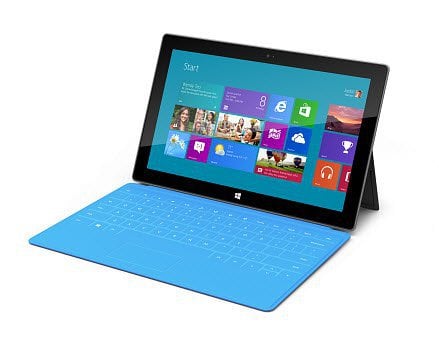The 32GB model of the Microsoft Surface running Windows RT, actually has only about 16GB of free disk space out of the box. The bulk of that space is taken up by Windows RT, built-in apps, and Office 2013. But, you can free up 4GB of additional space that’s used by the recovery partition. This will give you even more space for apps, games, music, video, etc.
Create a Recovery Drive
The Recovery partition provides an easy way to restore the tablet if something goes awry. Before deleting it, you’ll need back up the Recovery files to a flash drive.
Insert the flash drive into the USB port on the right side of the Surface. Then Hit WinKey + W to bring up the Settings Search field and type: recovery. Then click Create a Recovery Drive under the results.


Then work your way through the Create Recovery Drive wizard, making sure to select your USB flash drive.


Then wait while while the recovery drive is created.


To get your 4GB of disk space back, you’ll click Delete Recovery Partition link.


After verifying you want to delete it, you’ll see the space has been added to the Surface’s local drive. Then close out of the wizard.


Make sure to keep the recovery USB drive in a secure place if you need it later. If you want to be extra safe, I recommend backing up the Flash Drive you just created to a folder on a different computer or network drive.


If you do need to recover your Surface in the future, you’ll be able to boot from the flash drive and access Advanced Options.


4 Comments
Leave a Reply
Leave a Reply








newyorkcitymale
January 17, 2013 at 9:26 am
Good to know. Thanks!
Brian Burgess
January 19, 2013 at 12:06 am
You bet. Thanks for reading.
PhilVoid
February 11, 2013 at 5:56 pm
Great information. It goes well with your other article about the SD card libraries –
https://www.groovypost.com/howto/make-microsd-card-work-surface-windows-rt-libraries/
Thanks, you’re the MAN!
SP
April 16, 2019 at 9:58 pm
Thanks – this worked for me!